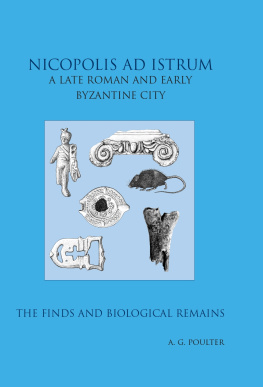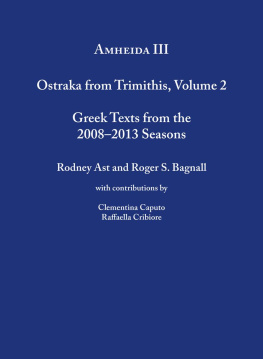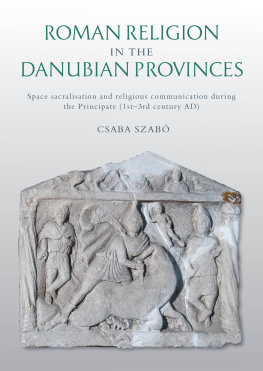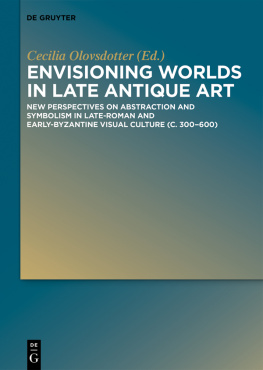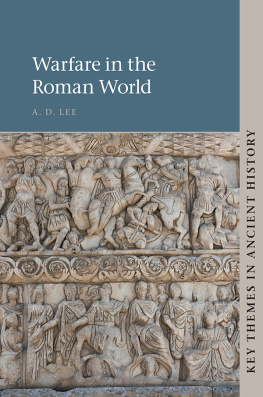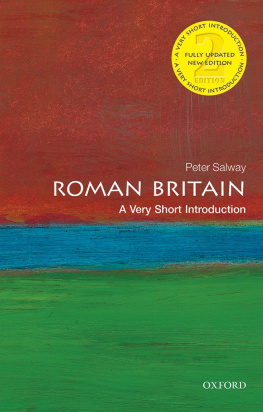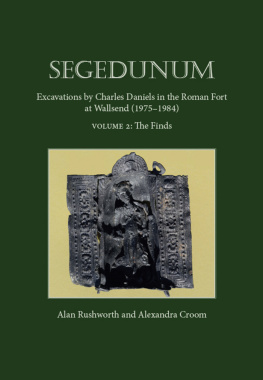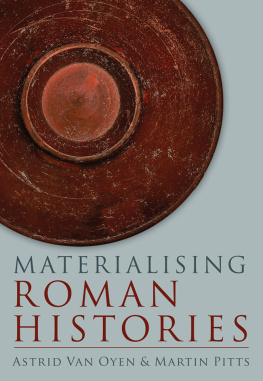Without the continuous and generous support provided by the Bulgarian Academy of Sciences, the Institute of Archaeology, Sofia and the Veliko Turnovo Historical Museum, this volume could never have been completed. The unswerving assistance offered by the British Academy and the Society of Antiquaries of London were essential to the success, not just of the excavations, but the progress towards its full publication. Thanks Jane. The British Council and the Bulgarian Ministry of Education provided Scholarship Grants for members of the team between 19851991.
Special thanks are due to the contributors to this volume, all of whom persevered, without financial help from the excavation fund. I wish to acknowledge, in particular, the contribution made by Tom Blagg who finished the final revisions to his manuscript shortly before his untimely death. As a good friend and a great scholar, he is missed by many and with good reason. Mark Beech not only contributed reports to this volume but also co-ordinated the environmental programme as a whole.
The illustrators, who produced the publication drawings during the field-seasons in Bulgaria, worked in often difficult conditions and merit special commendation for their achievement; Paul Stroud, Helen Jeffries and Kirsty Norman. In Britain, Jane Goddard added to the corpus of final drawings for publication and more than matched the high standards set by those who had joined the field team. David Taylor also drew finds. Moreover, he successfully organized and assembled the large number of drawings and contributed the advice and practical knowledge which underpins the publication of the illustrations. Dr A. Jones has spent a year working with me on the final revisions of the texts. Her painstaking attention to detail and determination have contributed enormously to the final publication.
To all the above and the others who have offered advice and assistance in the preparation of this volume, I offer my heartfelt thanks. As in all successful outcomes, it is the combination of team-work and individual responsibility which achieves the best results.
BIBLIOGRAPHY
Alvey, R 1995. Notes on the molluscs from Nicopolis, unpublished manuscript, University of Nottingham
Andrews, P 1990. Owls, Caves and Fossils , London
Angel, J L 1966. Porotic hyperostosis, anemia, malarias and the marshes in prehistoric Eastern Mediterranean, Science, , 760763
Angel, J L 1967. Porotic hyperostosis or osteoporosis symmetrica, in Disease in Antiquity (eds D Brothwell and A T Sandison), 378387, Springfield, Illinois
Angelov, N 1958. Selishnata mogila pri s. Hotnitsa in Izsledvaniya v chest na akad D Dechev (eds V Beshevliev and Vl Georgiev), 389403, Sofia
Armitage, P 1993. Commensal rats in the New World, 14921992, Biologist, , 174178
Armitage, P 1994. Unwelcome companions: ancient rats reviewed, Antiquity, , 231240
Armitage, P, and West, B 1984. Faunal evidence from a late Medieval garden well of the Greyfriars, Transactions of the London and Middlesex Archaeological Society, , 107136
Armitage, P, West, B and Steedman, K 1984. New evidence of black rat in Roman London, The London Archaeologist, , 375383
Armitage, P L 1985. Small mammal faunas in later mediaeval towns. A preliminary study in British urban biogeography, Biologist, , 6571
Armour-Chelu, M and Clutton-Brock, J 1985. Notes on the evidence for the use of cattle as draught animals at Etton, in F S A Pryor, C French and M Taylor, An interim report on excavations at Etton, Maxey, Cambridgeshire, 198284, Antiquaries Journal, , 297302
Armour-Chelu, M J and Andrews, P 1994. Some effects of bioturbation by earthworms (Oligochaeta) on archaeological sites, Journal of Archaeological Science , , 433443
Arnold, E N and Burton, J A 1978. A Field Guide to the Reptiles and Amphibians of Britain and Europe , London
Audoin, F 1984. Point sur les rat, Anthropozoologica, , 1113
Audoin-Rouzeau, F and Vigne, J D 1994. Le colonisation de lEurope par le rat noir ( Rattus rattus ), Revue de Palobiologie, , 125145
Audoin-Rouzeau, F 1986. Ossements animaux du Moyen-age au Monastre de La Charit-sur-Loire , Publications de la Sorbonne 18, Srie Histoire Ancienne et Mdivale
Auffray, J-C and Britton-Davidian, J 1992. When did the house mouse colonize Europe?, Biological Journal of the Linnean Society, , 187190
Auffray, J-C, Tchernov, E and Nevo, E 1988. Origine du commensalisme de la souris domestique ( Mus musculus domesticus ) vis--vis de lhomme, Comptes Rendus de lAcademie des Sciences, , Srie III, 517522, Paris
Auffray, J-C, Vanlerberghe, F and Britton-Davidian, J 1990. The house mouse progression in Eurasia: a palaeontological and archaeozoological approach, Biological Journal of the Linnean Society, , 1325
Bacskay, E & Simn, K 1987. Some remarks on chipped stone industries of the earliest Neolithic populations in present Hungary, in Chipped Stone Industries of the Early Farming Cultures in Europe (eds J K Kozowski and S K Kozowski), 107130, Warsaw
Badham, K and Jones, G 1985. An experiment in manual processing of soil samples for plant remains, Circeae , , pt 1, 1526
Baker, J R and Brothwell, D R 1980. Animal Diseases in Archaeology , London
Bartosiewicz, L 1989. Animal remains from the Roman fort, in The Roman Fort at cs-Vaspuszta (Hungary) on the Danubian limes. ii (ed D Gabler), 600623, British Archaeological Reports, International series 531
Bartosiewicz, L and Choyke, A M 1991. Animal remains from the 19701972 excavations of Iatrus (Krivina), Bulgaria, Acta Archaeologica Academiae Scientiarium Hungaricae , 43, 181209
Bartosiewicz, L and Choyke, A M 1995. Die Tierreste aus Iatrus-Krivina (Asgrabung 19701972), in Iatrus V, 117121
Bass, W M 1986. Human Osteology: a Laboratory and Field Manual of the Human Skeleton, 2nd edn, Columbia, Missouri
Becker, K 1978a. Rattus rattus (Linnaeus, 1758) in Handbuch der Sugetiere Europas. Band 1, Nagetiere I (eds J Niethammer and F Krapp), 382400, Wiesbaden
Becker, K. 1978b. Rattus norvegicus (Berkenhout, 1769), in Handbuch der Sugetiere Europas. Band 1, Nagetiere I (eds J Niethammer and F Krapp), 401420, Wiesbaden
Beech, M 1997. The economy and environment of a Roman, late-Roman and early Byzantine town in north-central Bulgaria: the mammalian fauna from Nicopolis, in Proceedings of the 7th International Conference for Archaeozoology, ICAZ, Constance, September 1994 (eds M Kokabi and J Wahl), Anthropozoologica , 2526, 619630
Beedham, G E 1972. Identification of the British Mollusca , Amersham
Berg, L S 1962. Freshwater Fishes of the U.S.S.R. and Adjacent Countries, 4th edn, Jerusalem. (Russian version published 1948)
Berry, R J 1981. Town mouse, country mouse: adaptation and adaptability, Mammal Review, , 92130
Besenecker, H, Spitzenberger, F and Storch, G 1972. Eine Holozne kliensuger-fauna von der Insel Chios, gis, Senckenbergiana Biologica , , 145177
Billard, R 1997. Les Poissons dEau Douce des Rivires de France. Identification, Inventaire et Rpartition des 83 espces , Lausanne
Binford, L R 1981. Bones: Ancient Men and Modern Myths, London
Bir, T M 1987. Bone carvings from Brigetio in the collection of the Hungarian National Museum, Acta Archaeologica Academiae Scientiarum Hungaricae, , 153192
Bir, T M 1994. The Bone Objects of the Roman Collections , Catalogi Musei Nationalis Hungarici, Series Archaeologica II, Budapest
Birstein, V J 1993. Sturgeons and paddlefishes: threatened fishes in need of conservation, Conservation Biology, 7, 773787

